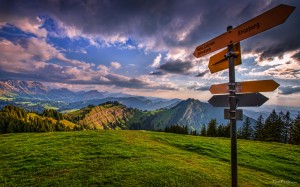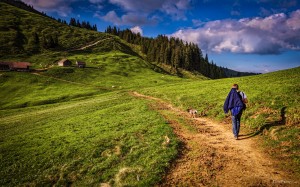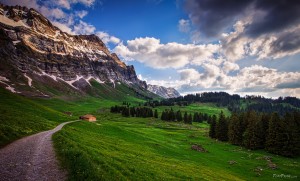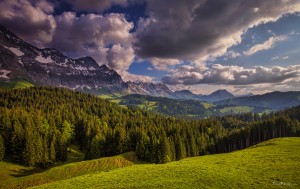Looking for the Milky Way – Part 1
Posted on Juni 17th, 2014
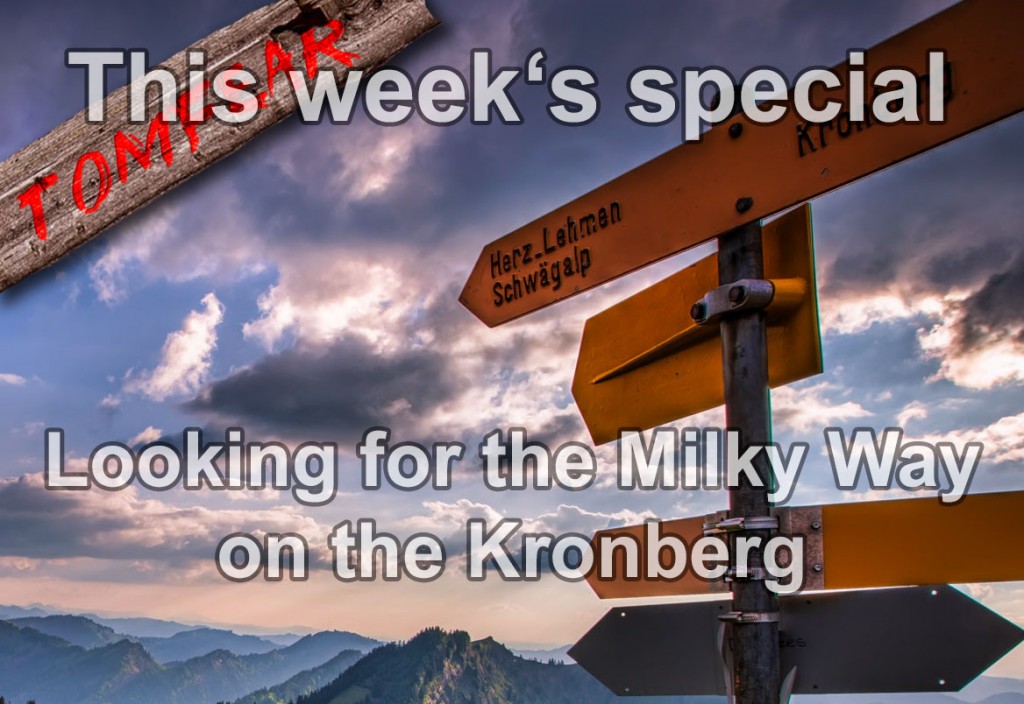 Today in the first part I will show you the requirements for the best sight. In the second part I will write about the hike up to the destination and part three will come to the final with the starscape image.
Today in the first part I will show you the requirements for the best sight. In the second part I will write about the hike up to the destination and part three will come to the final with the starscape image.
This year I have decided to take more pictures of the milky way. But this is not so easy, because it is hard to see a lot of stars here in Central Europe.
First, the immense light pollution is really annoying. The I can deal with it here in Switzerland, by going to the Alps. But this has to be well planned. Because the most interesting part of the Milky Way is the center and this part can only be seen just above the horizon. So it’s not a good idea to stand in the valley directly in front of a high mountain.
Requirements
Thereby we can think about images of the Milky Way, there are some requirements we have to consider.
Orientation
It is important to know where to look. The Milky Way is not always seen in the same direction as the Earth’s rotation pushes it about midnight from east to the west over the South Pole. So we need a view towards south. After searching a bit, I decided to go for the Kronberg, which lies directly in the north of mount Säntis, so we will see the Milky Way rise over the Santis.
Earth’s axis
Then we come on to the next problem, the Earth’s axis. Only if the direction of the Earth’s axis against the Milky Way is favorable, you can see the middle part also during the night. It doesn’t help anything when the middle part would be visible only during the day, then you see nothing. Anyway, in the northern hemisphere we can see only half of it. And the farther north you are, the less you see.
Light conditions
And on it goes with the conditions. Because the Milky Way is not very bright, no moonlight should interfere, which limits the time to a few moonless nights a year. Between early May and late July, you can see the middle part, so I have 4 new moon phases. The best way to see the movement of the Milky is to look it up using a star map. I did that with the great app “Star Walk”, which is available for iOS and Android. And I’ve found that the Milky Way is most beautiful between midnight and 3 clock in the morning. Thus, we have only a small time window in which the moon may not shine. There are a few days in either direction of the new moon that give the opportunity to meet these optimal conditions.
Weather
Everything considered OK, but then it can still go so wrong! Wait a moment, didn’t we forget something? Let me think sharp.Ah, exactly, the weather. And here we are at the core of all the problems: How often do we meet clear nights just when we need them? Rarely! Really really rarely.
And so it happened also during the whole time window at the beginning of May. Also in the next time window at the end of May, it looked really bad. But then at the very last possible day was clear weather announced for the night between midnight and 3 clock.
So pack the backpack, ask colleague who is surprisingly available, and this time we hope the weather service is right for once.
Read more tomorrow in part 2 about the burdensome way up to the destination.
Looking for the Milky Way -Part 1
Looking for the Milky Way -Part 2
Looking for the Milky Way -Part 3
Der Artikel ist auch in Deutsch verfügbar.








